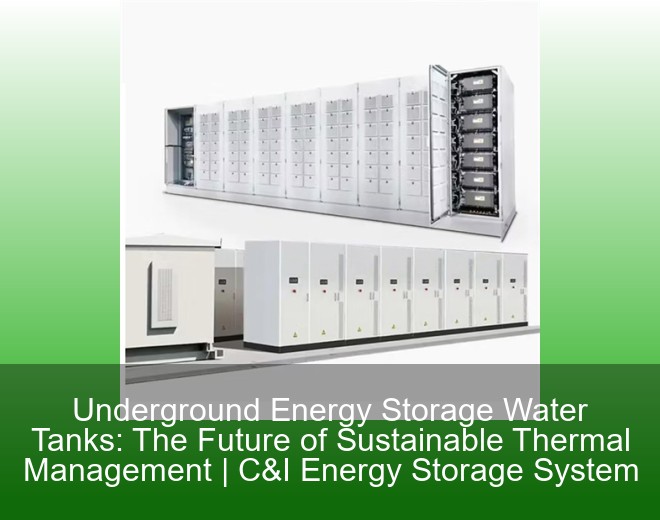
A cargo ship glides silently through the Panama Canal, leaving only bubbles in its wake instead of black smoke. This isn't science fiction – it's the promise of ship hydrogen energy storage equipment. With maritime transport accounting for nearly 3% of global CO₂ emissions (that's more than Germany's entire carbon footprint!), the industry is scrambling for cleaner alternatives faster than a sailor tying knots before a storm[8]. [2025-02-21 09:37]

Your morning coffee is brewed by solar power, your EV charges overnight using grid-stored wind energy, and factories hum along on time-shifted electricity. This isn’t sci-fi—it’s the energy storage battery revolution unfolding right now. For entrepreneurs, the sector’s growing at lightning speed (pun intended), with global installations projected to jump 65% year-over-year in 2025[4]. But here’s the kicker—the rules just changed. China’s recent scrapping of mandatory “strong energy storage” policies[2] means the market’s shifting from government-led to innovation-driven. Ready to ride this battery-powered rollercoaster? [2024-11-06 17:11]

Tirana, a city where cafés serve espresso and solar-powered batteries with equal flair. While the global energy storage market is booming – projected to hit $289.6 billion by 2029 [1] – Tirana’s strategic position in Southeast Europe makes it a fascinating case study. Let’s unpack the Tirana energy storage battery scale ranking landscape and see how global giants are shaping this market. [2023-05-29 23:07]

Let’s face it: when you hear “energy storage system airflow price,” your first thought might be, “Are we literally talking about fan costs here?” Surprisingly, yes—and no. Airflow management is the unsung hero that determines whether your battery storage system becomes a Tesla-esque marvel or a pricey paperweight. With the global energy storage market hitting $33 billion annually[1], optimizing airflow isn’t just about cooling; it’s about dollars and sense. [2021-08-07 05:14]

you’re at a renewable energy conference, and someone starts ranting about power storage cabinet design. Half the room leans in; the other half checks their phones. Why? Because this topic is a big deal for specific audiences but utterly niche for others. Let’s dissect who’s listening: [2020-11-24 06:38]

engineers scratching their heads over energy bills, urban planners sweating (literally) about carbon footprints, and eco-warriors dreaming of net-zero cities. If you’re in any of these camps, welcome! Underground energy storage water tanks are like the Swiss Army knives of thermal management—solving multiple problems while hiding beneath our feet. These systems store excess heat or cold in water reservoirs underground, ready to be tapped when needed. Think of them as giant thermal piggy banks for buildings, factories, or even entire neighborhoods. [2025-07-26 09:20]

Let's start with a reality check: Your smart coffee maker probably has better energy management than some industrial facilities. But here's the kicker - building an energy storage system (ESS) no longer requires magic beans or a PhD in rocket science. With prices plummeting 50% since 2023 in China and 35% globally [1], ESS has become the "Swiss Army knife" of modern energy solutions. [2025-06-26 03:12]

Let’s face it: storing energy sounds about as exciting as watching paint dry. But what if I told you there’s a technology that turns underground caves into giant energy piggy banks? Enter compressed air energy storage (CAES), the unsung hero of grid-scale energy solutions. While it’s been around since 1978 (yes, older than the first iPod!), recent projects like China’s 300 MW facility in Gansu Province [6][8] are making waves. But before we crown it the king of renewables, let’s unpack its quirks. [2024-11-15 09:47]

energy engineers sipping coffee while scrolling for underground heat storage solutions, sustainability managers seeking carbon-free alternatives, and curious homeowners wondering if their backyard could become a renewable energy goldmine. That’s who we’re talking to today. Geothermal energy storage in rock layers isn’t just for lab-coated scientists—it’s a game-changer in our race against climate change. Let’s crack open this rocky treasure chest, shall we? [2024-11-11 20:40]

If you're eyeing roles like Supply Chain Manager for battery storage systems or Procurement Specialist for renewable energy projects, you're in the right place. This piece targets: [2024-08-27 07:12]

Imagine building a 100-megawatt energy storage power station for three years, only to slam the brakes last minute. That’s exactly what happened in Hunan Province’s salt cavern compressed air storage project – a sobering reminder that even promising renewable energy solutions face real-world roadblocks[1]. Let’s unpack why energy storage power station suspended projects are becoming alarmingly common across global markets. [2024-06-30 06:05]

Let's start with a fun thought: If your morning coffee mug were a battery, its "capacity" would determine how much caffeine you can store before needing a refill. Energy storage works similarly – but instead of coffee, we're talking kilowatt-hours. This article breaks down how professionals calculate energy storage capacity, why it's reshaping industries, and what you should know about this $33 billion global powerhouse[1]. [2023-10-25 03:32]
Enter your inquiry details, We will reply you in 24 hours.
Brand promise worry-free after-sales service